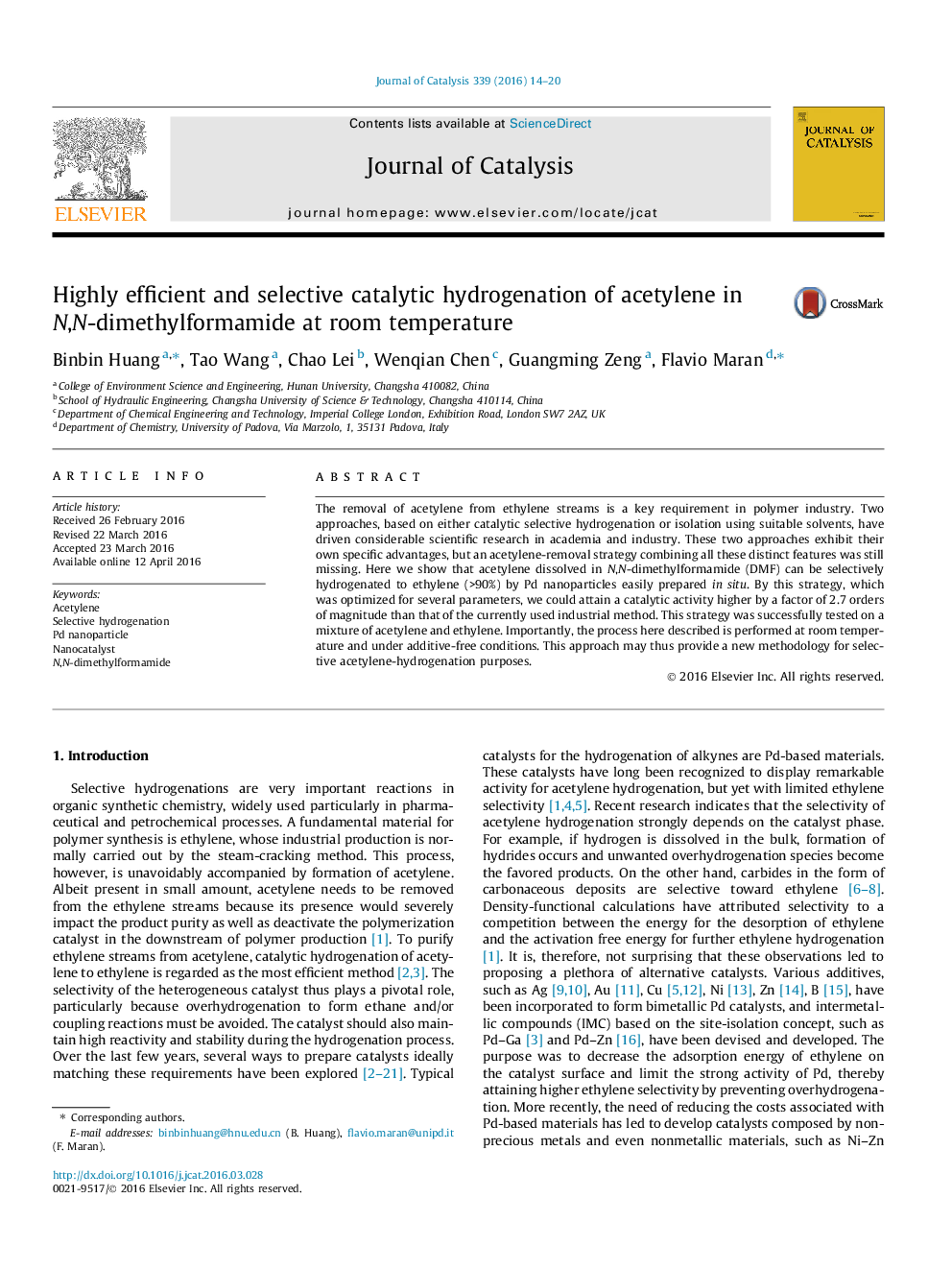| کد مقاله | کد نشریه | سال انتشار | مقاله انگلیسی | نسخه تمام متن |
|---|---|---|---|---|
| 60560 | 47537 | 2016 | 7 صفحه PDF | دانلود رایگان |

• The removal of acetylene from ethylene streams is a key step in polymer industry.
• Efficient simultaneous isolation and in-situ conversion of acetylene to ethylene is described.
• Hydrogenation is performed in DMF, on Pd nanoparticles, at ambient temperature.
• An activity much higher than currently used industrial methods is attained.
The removal of acetylene from ethylene streams is a key requirement in polymer industry. Two approaches, based on either catalytic selective hydrogenation or isolation using suitable solvents, have driven considerable scientific research in academia and industry. These two approaches exhibit their own specific advantages, but an acetylene-removal strategy combining all these distinct features was still missing. Here we show that acetylene dissolved in N,N-dimethylformamide (DMF) can be selectively hydrogenated to ethylene (>90%) by Pd nanoparticles easily prepared in situ. By this strategy, which was optimized for several parameters, we could attain a catalytic activity higher by a factor of 2.7 orders of magnitude than that of the currently used industrial method. This strategy was successfully tested on a mixture of acetylene and ethylene. Importantly, the process here described is performed at room temperature and under additive-free conditions. This approach may thus provide a new methodology for selective acetylene-hydrogenation purposes.
Figure optionsDownload high-quality image (108 K)Download as PowerPoint slide
Journal: Journal of Catalysis - Volume 339, July 2016, Pages 14–20